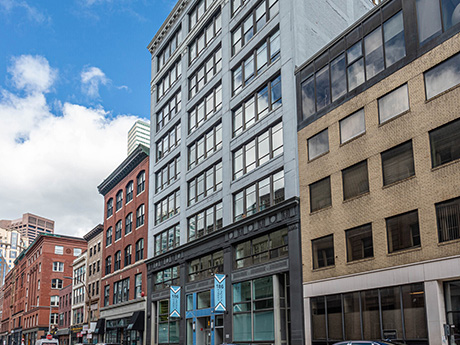WASHINGTON, D.C. — The COVID-19 pandemic is moving further into the rearview mirror, alongside the prospect of commercial real estate quickly returning to pre-pandemic norms. After three years of cautious optimism, industry leaders are concluding that most will not be returning to the office as often — or, for some, at all.
The implications of this shift will be profound for the commercial real estate industry, and not only for office owners, brokers and managers, according to Emerging Trends in Real Estate 2024, an annual report jointly produced by PwC US and the Urban Land Institute (ULI). The report includes proprietary data and insights from more than 2,000 leading real estate industry experts, gathered through a survey and in-person interviews.
Aftershock from the changing office landscape will be felt across multiple asset classes, according to the report, with downtowns and other property sectors that depend on a lively office market feeling the brunt of the impact. This is leading ULI to term the next year in commercial real estate “The Great Reset.”
From an investment standpoint, these changes will require long-held principles of portfolio construction to be re-evaluated. Sales transactions for office buildings are down more than twice as much as other major property types, and this trend is projected to continue as hybrid work continues to grow in popularity.
“It’s clear that the real estate industry is entering a new era of thinking, building and operating,” says Anita Kramer, senior vice president of ULI’s Center for Real Estate Economics and Capital Markets. “Overall, our data this year shows slightly lower ratings across U.S. markets in terms of development and investment prospects, reflecting a certain degree of caution at the start of the new era.”
“Now, industry professionals are at a turnkey moment that will require both innovation and adaption to shape a resilient real estate landscape for the future,” she adds.
Another keystone of this year’s report is an acceptance of the fact that higher interest rates are, unfortunately, here to stay — at least for a while longer. Over half of survey respondents indicated that they believe inflation will decline in 2024, with another third believing that inflation will at least stabilize.
Loan originations have fallen, allowing private debt sources to step in where primary debt sources are refusing to lend. And credit has become more expensive and firmly underwritten, leading borrowers to hold onto existing debt. But investors are still pursuing deals, with the industry seeing its highest “buy” rating since 2010.
“Despite economic headwinds and challenges with obtaining credit, there are opportunities available for high-quality properties that meet the needs of investors and tenants,” says Andrew Alperstein, a leader with PwC’s US real estate practice. “Firms must learn to ride out the current short-term risks and adapt their growth strategies to succeed in this period of higher-for-longer interest rates.”
More top trends
One of the bright spots in this year’s report is that the outlook for retail is exceeding expectations. Tenant demand for retail shot up over the past 18 months, and the U.S. will close 2023 with 35 million square feet of new retail product across all types of shopping centers.
“The industry is coming to realize that the nation will keep shopping for most of its goods and many services in shopping centers indefinitely, even if e-commerce continues to take market share away from in-store retailers,” according to the report.
As always, the market makes all the difference in how strongly trends are felt. Each year, Emerging Trends lists its top 10 “markets to watch,” and again Sun Belt cities dominated the list, filling 15 of the top 20 market slots with Nashville ranked number one for the third year in a row. Survey participants this year noted that households are attracted to the warmer weather, more affordable housing options and strong job growth in these markets.
This year’s top 10 markets include:
1. Nashville, Tenn.
2. Phoenix
3. Dallas/Fort Worth
4. Atlanta
5. Austin, Texas
6. San Diego
7. Boston
8. San Antonio
9. Raleigh/Durham, N.C.
10. Seattle
The commercial real estate industry is also innovating through the use of AI and new forms of design that minimize environmental impact. Though advancements in AI offer capabilities such as enhancing the property search and analysis process, the industry is trepidatious to adopt AI as standard practice.
To read more of the Emerging Trends report, click here.
—Katie Sloan


